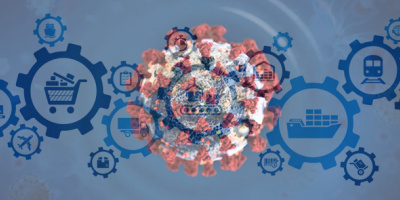Much can be deduced from community feedback if you go looking for it.
Last week, HelpSystems released their second annual IBM i Marketplace Survey report. This year, 834 people completed the survey, compared to 344 the year before. What I like about this survey is that it highlights what our peers in other organizations are doing with their systems. This is important because I'm sure I'm not the only one who gets asked a couple of times a month questions like these:
"Who else is doing this?"
"Are we the only ones using this solution?"
"What's the rest of the industry doing?"
We keep our ears to the ground as best as we can, but the real meat comes in the form of good data.
Last year's report was a great start, but I had some concerns about semantics, such as the differences between Power and POWER. You see, all Power Systems have POWER processors, yet not all POWER processor-based systems are Power Systems. This year, much of that has been cleared up, so I have to give props to HelpSystems for that. Also, to provide additional clarity to the study, I thought it was a great idea for HelpSystems to have a panel discussion on January 13 featuring Tom Huntington from HelpSystems, Alison Butterill and Ian Jarmin from IBM, and IT Jungle's Timothy Prickett Morgan.
In the The Data Center: POWER Server Capacity section, 8.2% of respondents have older than POWER5 compared to 9.6% the year before. For POWER5, 26.9% this year compared to 34%. POWER6 was barely a 2% increase this year over last year's number. Here's the really good news. POWER7 went from 58.4% last year to 62.4% this year and POWER8 went from 8.1% to 23.1%. The year-to-year numbers show the older iron dropping off and being replaced with primarily new POWER8 servers. Of course, the new number could be a result of the larger survey sample size, but I'm being realistic with a hint of optimistic.
For Primary Operating System Level, the IBM i 5.4 and older numbers actually increased a little bit, and I'd assume that's to do with the larger sample size. IBM i 7.1 grew from 58.4% to 67.2% and 7.2 moved up 11 percentage points to 14.5%. That's better growth than 7.1, which is very encouraging. With regards to How Many Partitions of IBM i people run, the survey scale changed year to year, so it's hard to do an accurate comparison. What we can talk about is that 33% of customers use a single instance of IBM i. 60.9% run between two and thirty partitions. Next year, I'd love to see that broken down further to understand who's doing more traditional LPAR and who's doing i hosting i. How many guest IBM i partitions do you hang off your primary partition? What are those guest partitions used for? These questions are pertinent because the majority of IBM i customers are doing multi-partition systems. We need to dig a little deeper in this area.
Furthermore, I still want to know how many of these customers use a Hardware Management Console (HMC). I'd like to see a correlation between system size (core count, model, etc.) and HMC ownership. Also, it would be nice to see the adoption of the new virtual HMC appliances and a correlation between HMCs (virtual or traditional) and partition counts.
With regards to AIX and Linux on Power Servers, I like the way the data was presented this year compared to last in that the opportunity to misconstrue the results has been yielded with some clarity. Obviously, we see Linux on x86-64 on top with 29.6% of respondents. Similar to the partitioning section, I'd like to understand how customers are partitioning Linux servers. To me, knowing if Linux is alone on a Power Systems machine or partitioned along with IBM i or AIX is less relevant than knowing how many Linux on POWER or AIX partitions exist in an environment. POWER is POWER. Knowing the underlying Linux OS is important as well. Are customers embracing Ubuntu? Where do Red Hat and SUSE fit? What are these partitions being used for? What Windows services do you see Linux replacing in the future? Linux has a great opportunity in the IBM i data center but from the HelpSystems Q&A, there are still customers who aren't aware you can do IBM i hosting Linux, let alone know there are three supported versions available.
Some of the IT Initiatives results are very interesting. Of course, modernization comes in at number one with 58.3% holding it as a top concern. The recent modernization Redbook is, I believe, the second most downloaded Redbook in the history of IBM. Considering it's only a couple of years old, that says something: people want to understand how to bring their systems into 2016 to help with future proofing.
Only 33.1% say security is a top concern for the next five to ten years. This is probably the most alarming statistic in this study. Why this isn't near 100% is beyond my cognitive capabilities, so I'll just have to speculate. Maybe it's because we think IBM i is still immune from eavesdropping on TCP/IP because you really couldn't tap into communications on a twinaxial cable. Maybe the survey respondents aren't the same as the ones who supplied data to the most recent HelpSystems State of IBM i Security survey a couple of short months ago, where there were serious issues uncovered yet again. 33% would seem like a pretty good number, but when you consider the fact that 15% of user profiles have *SPLCTL special authority and 20% have *JOBCTL, that tells me that 67% don't see these as top concern at all. I wrote a piece on this that you should check out called Your IBM i Data Is Insecure. The piece was partly inspired by the HelpSystems security study and partly by the response to a session I did in which I asked how many people secure their Telnet communications and the room full of people didn't raise their hands. It's not just encryption we have to worry about. We need to be concerned with poor encryption. SSLv3 is dead. Many would even say, myself included, that anything less than TLS 1.2 is insecure. What about using old, broken ciphers? We are living under a false sense of security, and it's only a matter of time before one of us gets bitten hard. Not fixing these holes doesn't appear to be a case of "we need more staff to implement better security" or a case of budget restrictions. The survey says only 33.1% hold it to importance.
The concern about IBM i skills depletion is starting to become a bit of a joke to me. It's really hard to say that without sounding harsh. From a security perspective, the statement makes no sense. Is security an IBM i skill? No. Security is security. We need to hire people who hold security to the utmost concern. Of course, IBM i has its own set of rules, like any other operating system. New people will learn those rules like we all did. New people will learn how Control Language works and how adopted authority works. Very few of us learned "IBM i skills" in college. We take our business or IT or accounting background and then learn how to manage IBM i. When we speak about IBM i skills depletion, I'd argue we're really concerned with people who can come in and push the right buttons to make the same things work. This isn't progressive thinking, and it is contradictory to the 58% who have modernization as a concern. So which is it?
IBM i is evolving constantly. It's opened itself up to new skills, new people. This skills concern should be far less than what it is because IBM i is now far more welcoming and accommodating to people who know languages other than RPG and COBOL. What made me chuckle is that, according to the survey, only 39% of people run an Apache web server. Every IBM i partition runs at least two Apache web servers! One is the APACHEDFT, and one is IBM Navigator for i. That's 100% unless you've turned them off manually. Maybe the problem isn't an IBM i skills shortage in the future because people are getting older and retiring. Maybe the real problem is an IBM i enlightenment shortage because those of us worried about an "IBM i skills shortage" perhaps aren't aware of what the operating system can do right now. It's not our father's AS/400. Even if it were, the perceived skills shortage would be just as irrelevant, if not more so.






















 More than ever, there is a demand for IT to deliver innovation. Your IBM i has been an essential part of your business operations for years. However, your organization may struggle to maintain the current system and implement new projects. The thousands of customers we've worked with and surveyed state that expectations regarding the digital footprint and vision of the company are not aligned with the current IT environment.
More than ever, there is a demand for IT to deliver innovation. Your IBM i has been an essential part of your business operations for years. However, your organization may struggle to maintain the current system and implement new projects. The thousands of customers we've worked with and surveyed state that expectations regarding the digital footprint and vision of the company are not aligned with the current IT environment. TRY the one package that solves all your document design and printing challenges on all your platforms. Produce bar code labels, electronic forms, ad hoc reports, and RFID tags – without programming! MarkMagic is the only document design and print solution that combines report writing, WYSIWYG label and forms design, and conditional printing in one integrated product. Make sure your data survives when catastrophe hits. Request your trial now! Request Now.
TRY the one package that solves all your document design and printing challenges on all your platforms. Produce bar code labels, electronic forms, ad hoc reports, and RFID tags – without programming! MarkMagic is the only document design and print solution that combines report writing, WYSIWYG label and forms design, and conditional printing in one integrated product. Make sure your data survives when catastrophe hits. Request your trial now! Request Now. Forms of ransomware has been around for over 30 years, and with more and more organizations suffering attacks each year, it continues to endure. What has made ransomware such a durable threat and what is the best way to combat it? In order to prevent ransomware, organizations must first understand how it works.
Forms of ransomware has been around for over 30 years, and with more and more organizations suffering attacks each year, it continues to endure. What has made ransomware such a durable threat and what is the best way to combat it? In order to prevent ransomware, organizations must first understand how it works. Disaster protection is vital to every business. Yet, it often consists of patched together procedures that are prone to error. From automatic backups to data encryption to media management, Robot automates the routine (yet often complex) tasks of iSeries backup and recovery, saving you time and money and making the process safer and more reliable. Automate your backups with the Robot Backup and Recovery Solution. Key features include:
Disaster protection is vital to every business. Yet, it often consists of patched together procedures that are prone to error. From automatic backups to data encryption to media management, Robot automates the routine (yet often complex) tasks of iSeries backup and recovery, saving you time and money and making the process safer and more reliable. Automate your backups with the Robot Backup and Recovery Solution. Key features include: Business users want new applications now. Market and regulatory pressures require faster application updates and delivery into production. Your IBM i developers may be approaching retirement, and you see no sure way to fill their positions with experienced developers. In addition, you may be caught between maintaining your existing applications and the uncertainty of moving to something new.
Business users want new applications now. Market and regulatory pressures require faster application updates and delivery into production. Your IBM i developers may be approaching retirement, and you see no sure way to fill their positions with experienced developers. In addition, you may be caught between maintaining your existing applications and the uncertainty of moving to something new. IT managers hoping to find new IBM i talent are discovering that the pool of experienced RPG programmers and operators or administrators with intimate knowledge of the operating system and the applications that run on it is small. This begs the question: How will you manage the platform that supports such a big part of your business? This guide offers strategies and software suggestions to help you plan IT staffing and resources and smooth the transition after your AS/400 talent retires. Read on to learn:
IT managers hoping to find new IBM i talent are discovering that the pool of experienced RPG programmers and operators or administrators with intimate knowledge of the operating system and the applications that run on it is small. This begs the question: How will you manage the platform that supports such a big part of your business? This guide offers strategies and software suggestions to help you plan IT staffing and resources and smooth the transition after your AS/400 talent retires. Read on to learn:
LATEST COMMENTS
MC Press Online